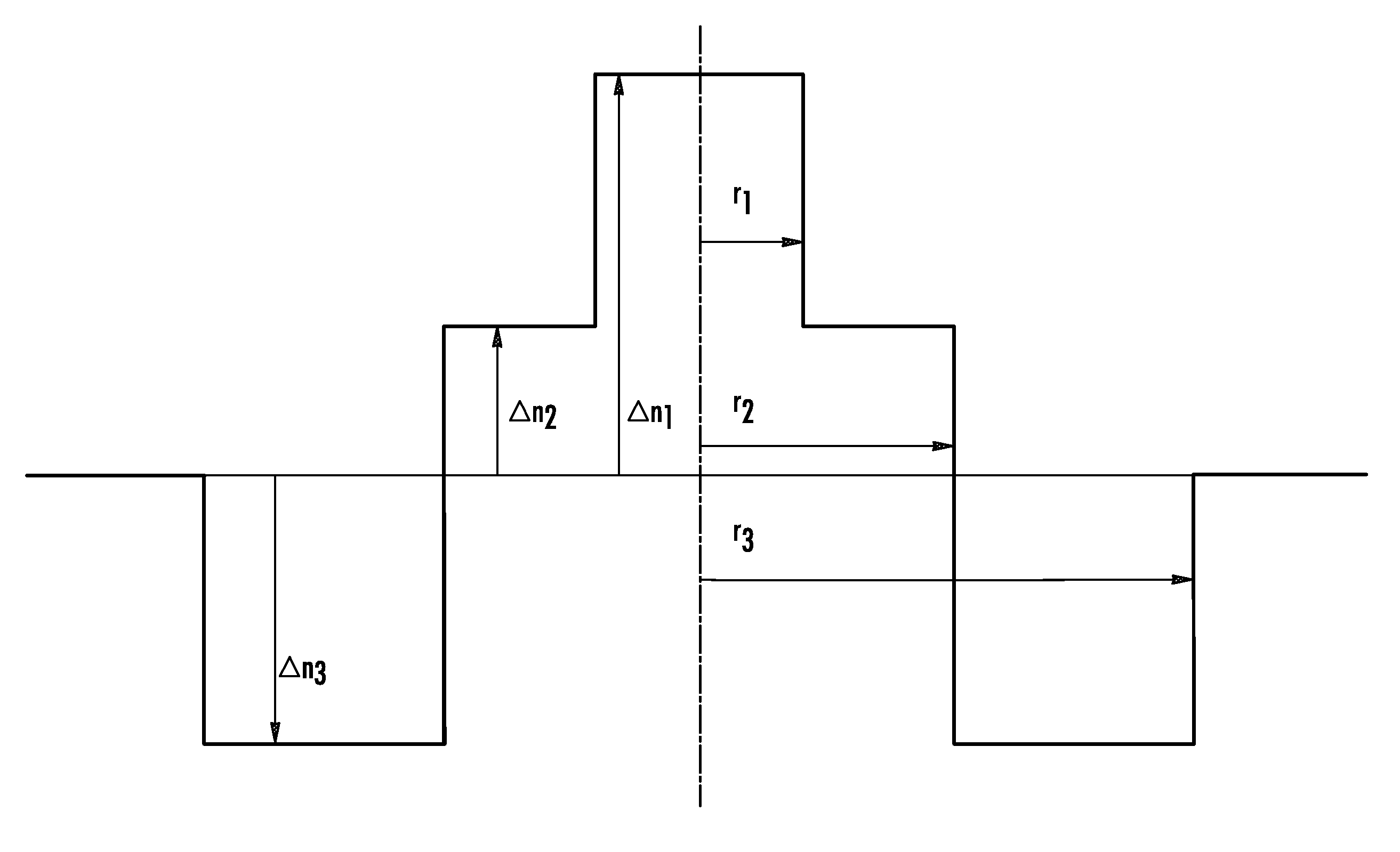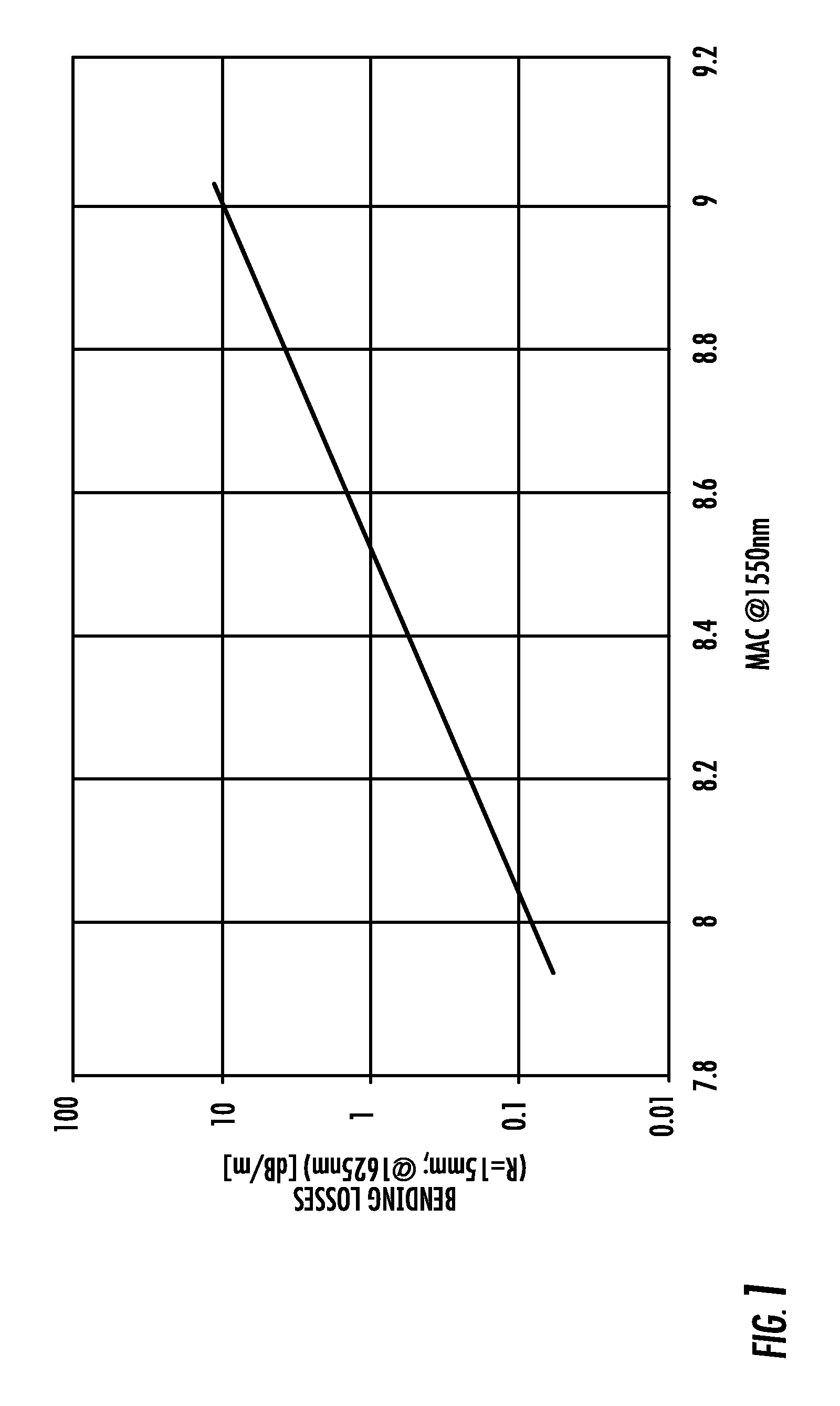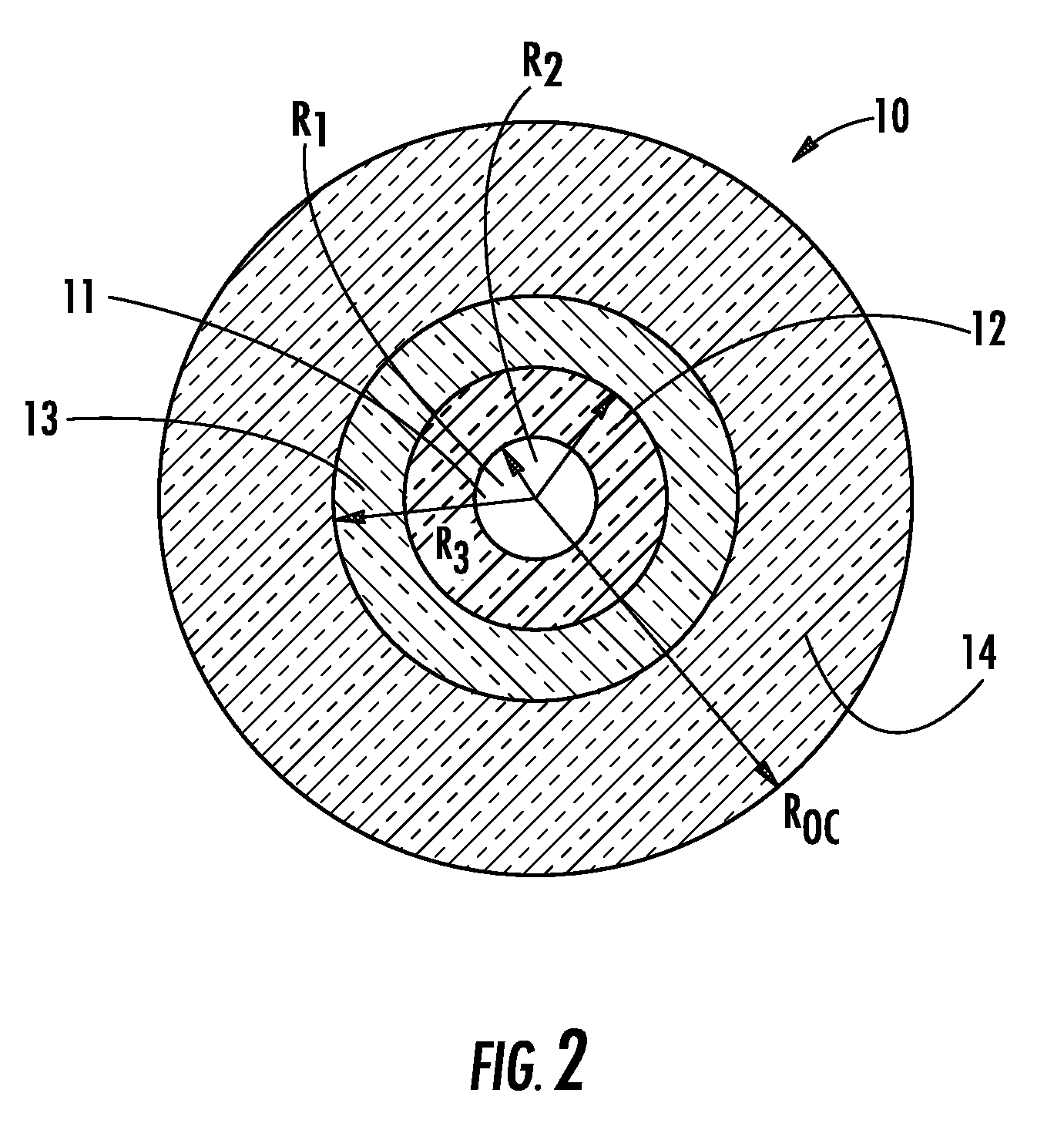Optical fiber
a technology of optical fiber and optical fiber, applied in the field of optical fiber transmission, can solve the problems of loss, transmitter instability, and reduced signal-to-noise ratio at the receiver
- Summary
- Abstract
- Description
- Claims
- Application Information
AI Technical Summary
Benefits of technology
Problems solved by technology
Method used
Image
Examples
Embodiment Construction
[0069]In one aspect (and with reference to FIG. 2), the present invention embraces an optical fiber 10 that includes a core 11 (i.e., the central core region in which the optical signal to be transmitted is guided) and a cladding region for confining the optical signal in the core 11. The cladding region includes a first inner cladding 12, a depressed trench 13 (or depressed, second inner cladding), and an outer cladding 14 (e.g., an external optical cladding). The depressed trench 13 typically has a refractive index difference with the outer cladding 14 that is less than −3×10−3 (e.g., less than about −15×10−3).
[0070]According to the present invention, the core region of the optical fiber includes at least two dopants, the concentrations of which, in effect, vary continuously over the entire radius of the core region. Typically, the substantially continuous variation in radial dopant concentration is progressive (e.g., increasing continuously in a radial direction) or regressive (e...
PUM
 Login to View More
Login to View More Abstract
Description
Claims
Application Information
 Login to View More
Login to View More - R&D
- Intellectual Property
- Life Sciences
- Materials
- Tech Scout
- Unparalleled Data Quality
- Higher Quality Content
- 60% Fewer Hallucinations
Browse by: Latest US Patents, China's latest patents, Technical Efficacy Thesaurus, Application Domain, Technology Topic, Popular Technical Reports.
© 2025 PatSnap. All rights reserved.Legal|Privacy policy|Modern Slavery Act Transparency Statement|Sitemap|About US| Contact US: help@patsnap.com



